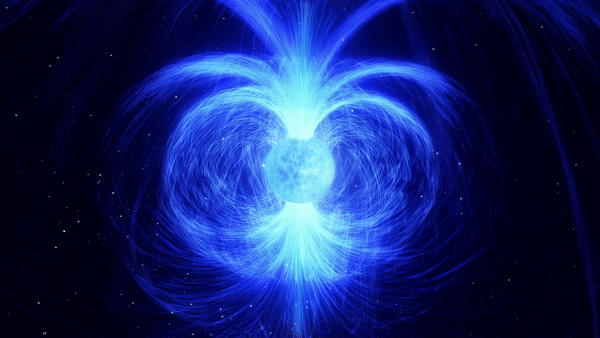The star HD 45166 has puzzled astronomers for a century. Dr Tomer Shenar got so fascinated with its existence that he has spent years trying to explain its nature. In the process, he may have solved an even bigger mystery: the source of the universe’s most powerful magnets.
HD 45166 is a Wolf-Rayet star. These helium-rich stars are the hottest category of star we have found, in HD 45166’s case, almost 10 times as hot as the Sun. Their immense heat means that despite being exceptionally rare, they make an outsize contribution to the universe’s stock of heavier elements.
Being so extreme, Wolf-Rayet stars have a lot of unexplained features, but HD 45166 has some particularly curious properties, including a spectral signature unlike any other.
“This star became a bit of an obsession of mine,” The University of Amsterdam’s Shenar said in a statement. “I remember having a Eureka moment while reading the literature: ‘What if the star is magnetic?’”
Shenar and colleagues used the Canada-France-Hawaii Telescope to study HD 45166 in unprecedented detail, seeking the polarization and split spectral lines that indicate strong magnetic fields. Combined with archival observations from other instruments, they have revealed previously unknown features about the star, most importantly that it has a magnetic field of 43,000 Gauss.

Artist’s impression of HD 45166, showing its invisible, extraordinarily powerful magnetic fields. The star is so hot most of its light is emitted in the ultraviolet.
Image Credit: ESO/L. Calçada
By comparison, the Earth’s magnetic field is about half a Gauss and a fridge magnet is about 50 Gauss. You really wouldn’t want to be in the vicinity of this thing if you have a pacemaker.
Nevertheless, this is far from a record. Magnetars, a rare subset of neutron stars, have magnetic fields of hundreds of trillion Gauss, a figure completely out of keeping with the rest of the universe. Until now, astronomers have not been able to explain how these staggering fields form, and why some neutron stars are so magnetic while others are not, but Shenar thinks HD 45166 is the clue.
Like other Wolf-Rayet stars, HD 45166 is massive enough that it will eventually become a supernova. Indeed, that time is not far off, astronomically speaking, since it has burned through most of its hydrogen, which is why it is so helium-rich. Once it has finished fusing much of its helium into other elements, its core will collapse and explode, leaving a neutron star behind.
Being far denser than the star from which it came (and indeed denser than anything other than a black hole), the neutron star’s immense magnetic flux will create a field greater than the one HD 45166 currently has. Quite likely, that same amount of magnetism packed into a tighter space will be sufficient to create a magnetar. It might seem strange that a magnetic field would survive an explosion as powerful as a supernova undisrupted, but that is what stellar evolution models suggest will occur.
This still leaves the question of why some stars are so magnetic to start with. HD 41566’s secret may lie in Shenar’s suspicion it was formed from two stars that evolved in a very tight orbit, passing their outer layers back and forth until their orbits decayed, and they merged.
This is the first time a massive helium star has been found to be magnetic, and could spark a race to see whether it is as unusual as it seems. “It is exciting to uncover a new type of astronomical object,” Shenar said, ”Especially when it’s been hiding in plain sight all along.”
In the discovery process, Shenar found some other interesting things about HD 45166. Although already known to be part of a binary system, closer observations revealed it orbits more than 50 times further from its companion than previously thought, ruling out the possibility their interactions stripped away its outer layers. It’s also quite a bit lighter than anticipated, around twice the mass of the Sun. That’s odd, because all other Wolf-Rayet stars are at least 8 solar masses.
HD 45166 is around 3,000 light years away, far enough to be completely safe when it goes supernova, probably in a few tens of thousands of years, but close enough to give us a great show.
The findings are published in Science.
Source Link: Strange Helium Star Could Become One Of The Universe's Most Powerful Magnets